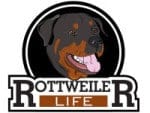You’ve brought home a new rottweiler puppy, and you’re in the dog food aisle, feeling overwhelmed. What kind of food should you get? Dry food or wet food? Chicken flavor or beef? Grain-free or not? And kibble? This article will help clear things up by giving tips on choosing the right food for your four-legged buddy.
Avoid Giving Cooked Meats
When it comes to feeding your dog, you might be tempted to give them scraps from the dinner table. However, it’s important to avoid cooking meats when feeding them to your dogs. Raw meat is a much healthier option for your furry friend. Cooked meat can be difficult for your dog to digest and can lead to health problems. Additionally, cooked meat can sometimes contain harmful bacteria that can make your dog sick. So next time you’re tempted to give Fido a piece of your steak, remember that raw is best!
Look for the “ Complete” Tag on Food Packet
“Complete” dog food indicates that the food has been designed and tested to meet the complete nutritional requirements of dogs. This means that the food contains all the necessary proteins, fats, vitamins, minerals, and other nutrients your dog needs to thrive. On the other hand, food with supplemental labels is merely treated and should be given in addition to normal meals. So next time you’re at the store picking out food for your furry friend, make sure to check that it’s marked as “complete.” Your dog will thank you for it!
Understand Ingredients And Food Labels
When buying dog food, it’s important to understand the food label and ingredient list. Your dog relies on you to provide nutritious food to keep them healthy and happy. While many commercial dog food labels say they meet your dog’s nutritional needs, not all products live up to their claims. First, make sure that the product contains high-quality protein sources. Dogs need protein for muscle development, cell repair, and other vital functions.
Second, look for a balance of vitamins and minerals. A complete and balanced diet should include everything your dog needs for good health, including vitamins A, D, and E; calcium; and phosphorus. By taking the time to understand the ingredient list, you can be sure that you’re providing your four-legged friend with the best possible diet.
Make Sure To Introduce Anti-Oxidant Rich Food
Regarding dog diet, you’ll want to ensure that their food is packed with antioxidant-rich foods. These foods can help to protect your dog’s cells from damage, while anti-inflammatory ingredients can promote joint health. By introducing taste of the wild with ancient grains pet food, many dog owners can help to support their dog’s immune system and keep their coat healthy and shiny. By feeding your dog a nutrient-rich diet, you’ll be giving them the best possible chance at a long and healthy life.
Introduce Fresh Foods In Dog Diet
You may love fresh, whole foods yourself, do you think it’s only natural to want to feed your dog the same way. After all, a healthy diet is important for both humans and animals. Introducing fresh, whole foods into your dog’s diet can have great benefits. For one thing, whole foods are generally more nutritious than processed foods. They contain more vitamins, minerals, and antioxidants, which can boost your dog’s immune system and help fight disease.
Whole foods are also generally more digestible than processed foods, meaning that your dog will absorb more of the nutrients they need. And since whole foods are usually less processed and contain fewer additives, they are often easier on your dog’s stomach and can help prevent digestive problems. If you’re interested in adding fresh, whole foods to your dog’s diet, talk to your veterinarian first to ensure that it’s the right decision for your pet.
Hydration Is Key
As a dog owner, you know that a healthy diet is essential to your pet’s well-being. Just like humans, dogs need plenty of water to stay healthy. Water helps flush toxins from the body, transport nutrients to cells, and keep the skin and coat hydrated. When your dog doesn’t get enough water, he can become dehydrated, leading to serious health problems. Signs of dehydration in dogs include lethargy, dry mouth, sunken eyes, and increased thirst. You should also give him wet food or add water to his dry food. And if you’re going on a hike or taking him on a long car ride, be sure to pack plenty of water for both of you.
Well, there you have it! By following the above tips, you should have no trouble finding and preparing quality food for your dog. Just remember to do your research, read labels carefully, and consult with your veterinarian if you have any questions or concerns. With a little effort, you can ensure that your furry friend always has access to the nutritious meals they need to stay happy and healthy.



